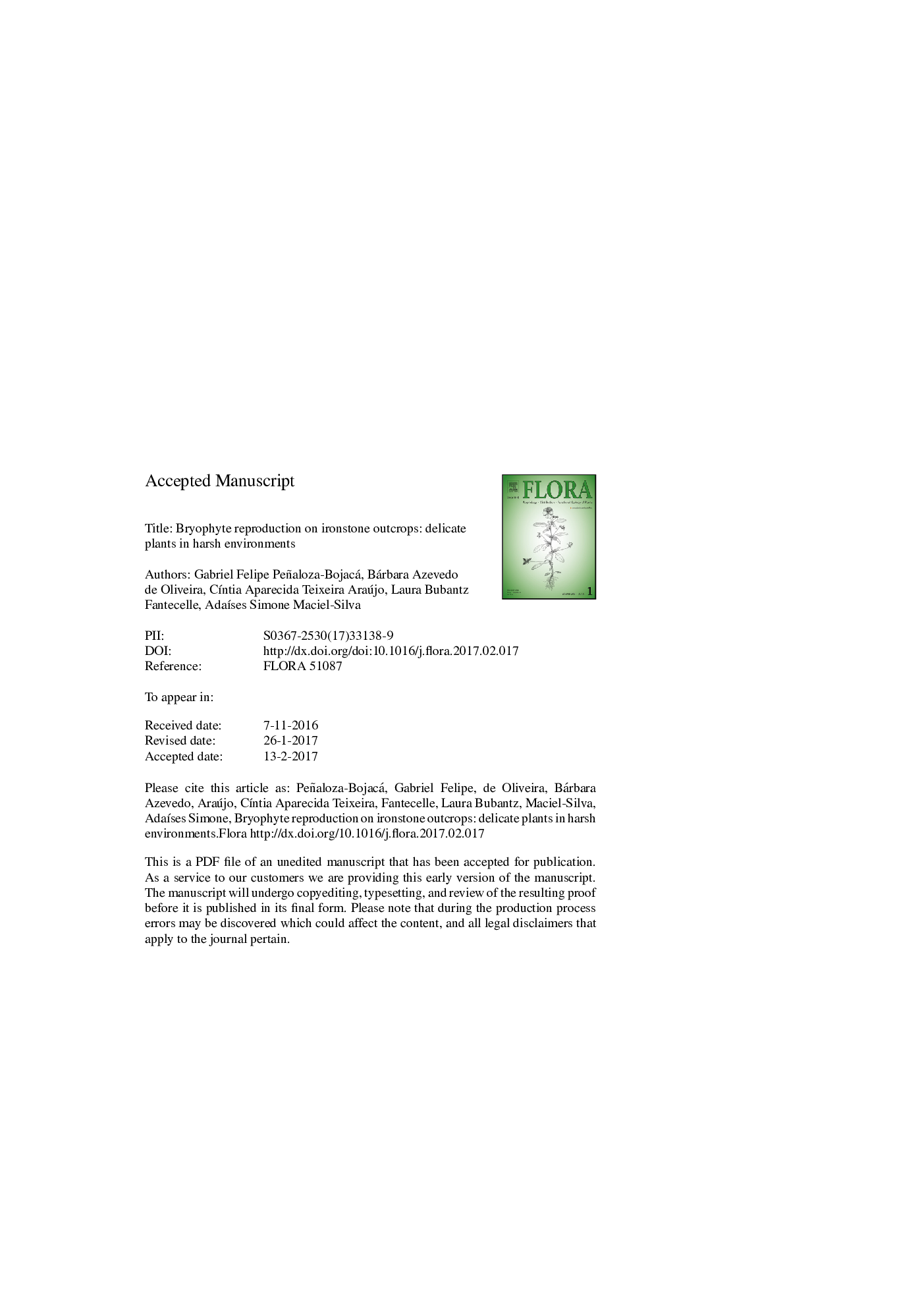| کد مقاله | کد نشریه | سال انتشار | مقاله انگلیسی | نسخه تمام متن |
|---|---|---|---|---|
| 8470233 | 1549922 | 2018 | 32 صفحه PDF | دانلود رایگان |
عنوان انگلیسی مقاله ISI
Bryophyte reproduction on ironstone outcrops: Delicate plants in harsh environments
ترجمه فارسی عنوان
تکثیر بریوفیت بر روی سنگ های قیمتی: گیاهان ظریف در محیط های خشن
دانلود مقاله + سفارش ترجمه
دانلود مقاله ISI انگلیسی
رایگان برای ایرانیان
موضوعات مرتبط
علوم زیستی و بیوفناوری
علوم کشاورزی و بیولوژیک
بوم شناسی، تکامل، رفتار و سامانه شناسی
چکیده انگلیسی
Ironstone outcrops are environments characterized by adverse environmental conditions, with high variations in daily temperatures, elevated UV exposure, constant winds, impermeable soils with low water retention capacities, and high levels of iron minerals. These conditions have selected for a very rich and endemic community of xerophilic plants, including many desiccation-adapted species, and we highlight here the importance of the bryophytes, a very poorly understood group that inhabits rocky outcrops. Our main aim was to investigate the reproductive strategies of bryophyte species growing on Brazilian ironstone outcrops (locally called “Cangas”). We studied the bryophytes in ten Cangas formations in two conservation areas in Minas Gerais State, Brazil, recording their reproductive modes (sexual vs. asexual), the types of asexual propagation structures produced, sexual systems, sexual expression, reproductive success, and their sex ratios. We encountered 108 species of bryophytes (42 liverworts and 66 mosses) with remarkable reproductive rates (ca. 50% of the specimens were observed to be reproducing sexually or asexually). Seventy percent of the bryophyte species were found reproducing, but with contrasting strategies in mosses (mostly asexually) and liverworts (mainly sexually). Among the asexually reproducing species, we recorded 31% having gemmae, in contrast to 69% with deciduous propagules. Sexual expression and reproductive success were mostly influenced by the sexual systems of the bryophyte species, reflecting the relevant role of dioecious mosses. The majority of dioecious species of bryophytes were female-biased. We emphasize the role of several key dioecious species of mosses that contribute large amounts of spores and asexual propagules in Cangas sites. These diaspores are very informative about how bryophytes growing on ironstone outcrops disperse and colonize new microhabitats at local and regional scales.
ناشر
Database: Elsevier - ScienceDirect (ساینس دایرکت)
Journal: Flora - Volume 238, January 2018, Pages 155-161
Journal: Flora - Volume 238, January 2018, Pages 155-161
نویسندگان
Gabriel Felipe Peñaloza-Bojacá, Bárbara Azevedo de Oliveira, CÃntia Aparecida Teixeira Araújo, Laura Bubantz Fantecelle, AdaÃses Simone Maciel-Silva,
